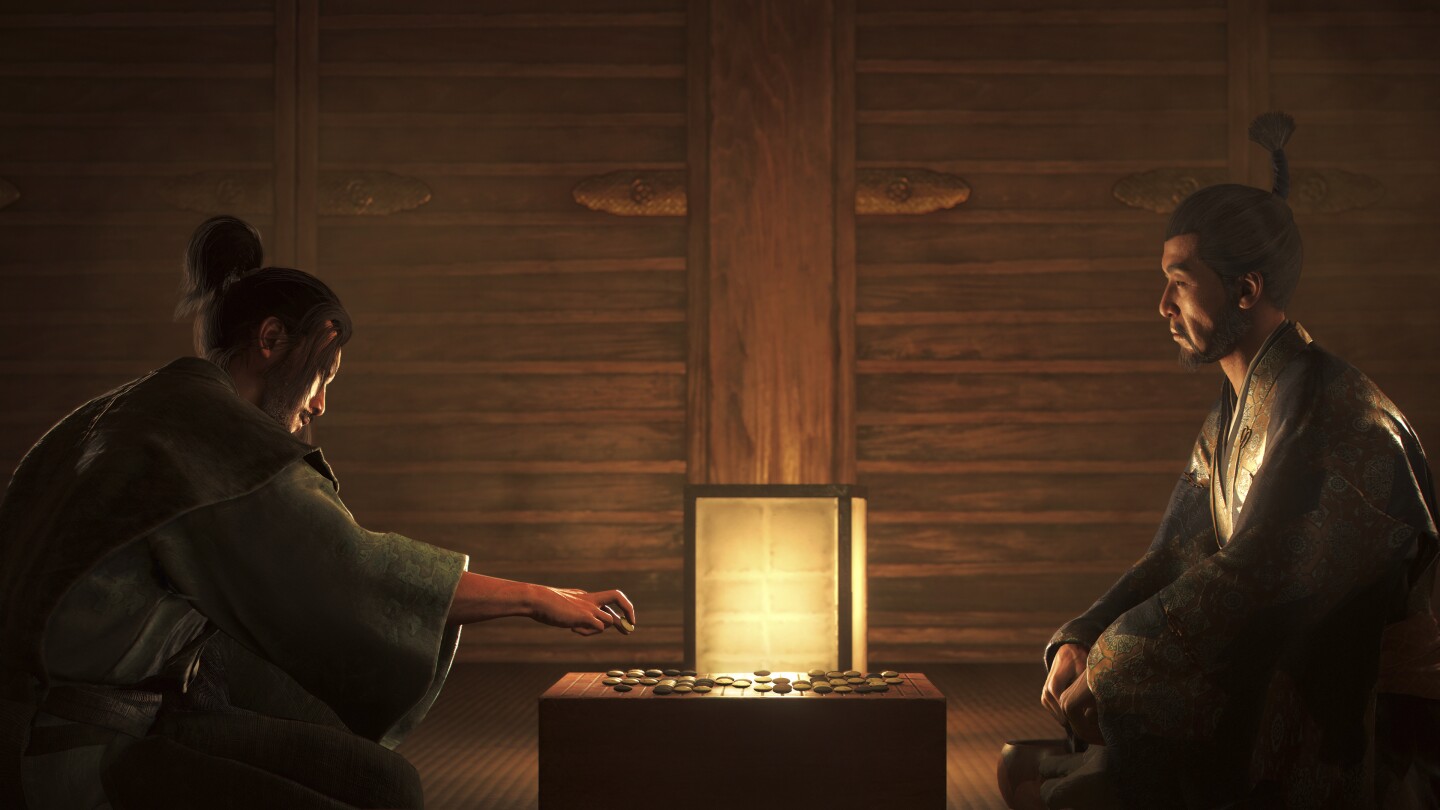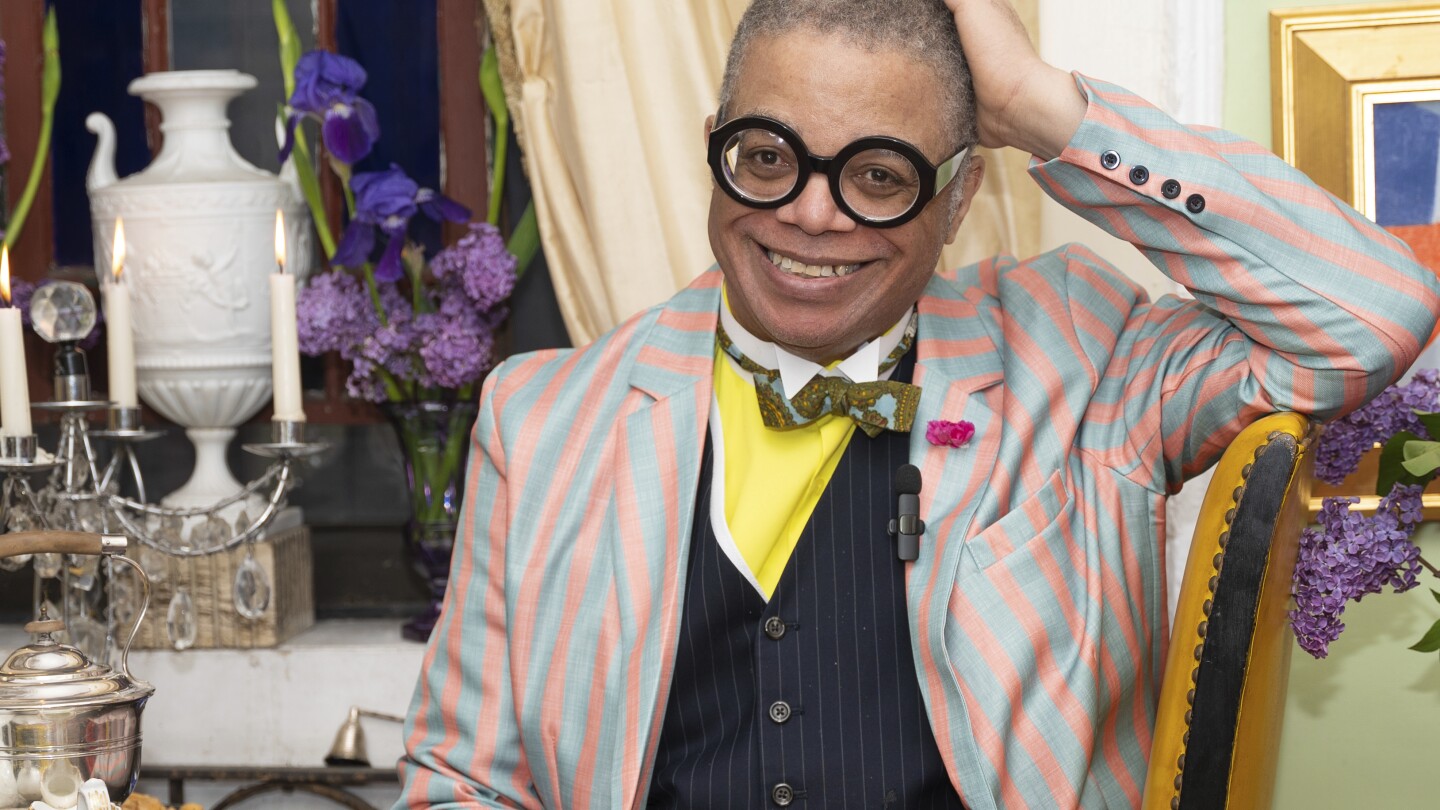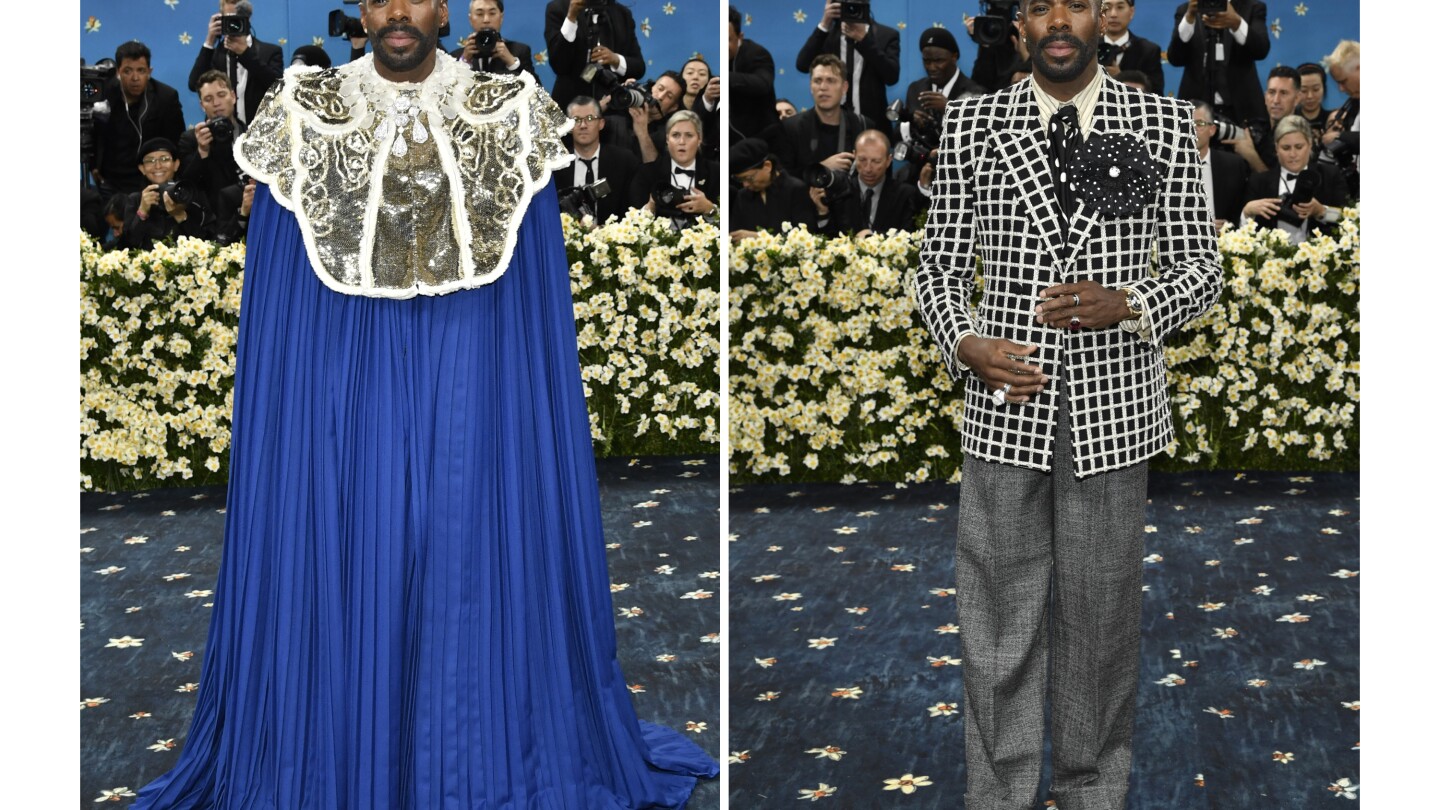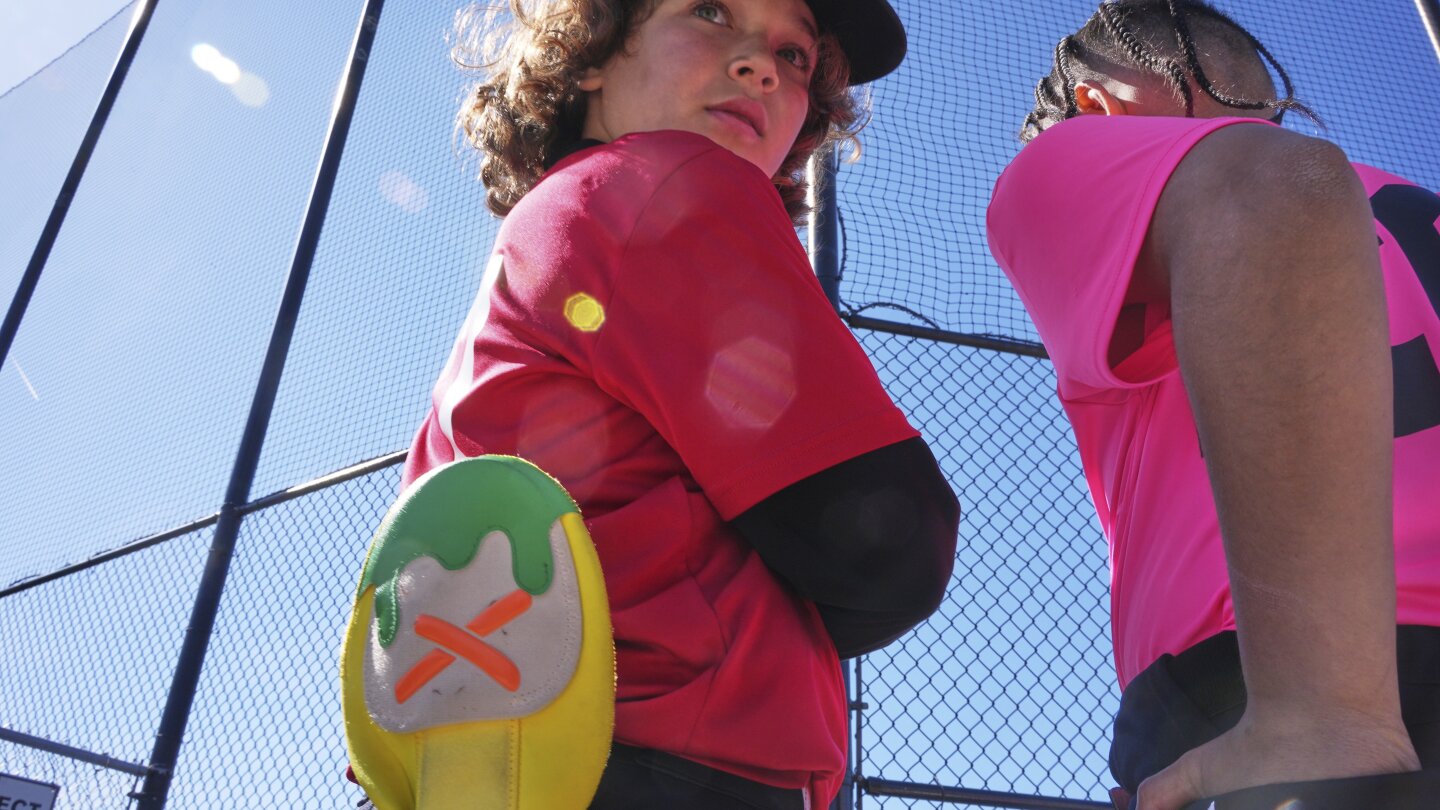Lifestyle
Assassin’s Creed gamers harassed a professor over a ‘woke’ character. She fought back with kindness

HANOVER, N.H. (AP) — Sachi Schmidt-Hori has never played Assassin’s Creed Shadows, but facing an onslaught of online harassment from its fans, she quickly developed her own gameplay style: confronting hate with kindness.
Schmidt-Hori, an associate professor of Japanese literature and culture at Dartmouth College, worked as a narrative consultant on the latest installment in the popular Ubisoft video game franchise. The game launched March 20, but the vitriol directed at Schmidt-Hori began in May 2024 with the release of a promotional trailer.
“Once I realized that I was by myself — nobody was defending me — I just decided to do what I knew would work,” she said. “It’s very difficult to hate someone up close.”
Ancient history sparks modern-day harassment
Set in 16th century Japan, the game features Naoe, a Japanese female assassin, and Yasuke, a Black African samurai. Furor erupted over the latter, with gamers criticizing his inclusion as “wokeness” run amok.
They quickly zeroed in Schmidt-Hori, attacking her in online forums, posting bogus reviews of her scholarly work and flooding her inbox with profanity. Many drew attention to her academic research into gender and sexuality. Some tracked down her husband’s name and ridiculed him, too.
“Imagine that! Professional #WOKE SJW confirms fake history for Ubisoft,” one Reddit user said, using an acronym for “social justice warrior.” Another user called her a “sexual degenerate who hate humanity because no man want her.”
Learning Yasuke was based on a real person did little to assuage critics. Asian men in particular argued Schmidt-Hori was trying to erase them, even though her role involved researching historical customs and reviewing scripts, not creating characters.
“I became the face of this backlash,” she said. “People wanted to look for who to yell at, and I was kind of there.”
Ubisoft told her to ignore the harassment, as did her friends. Instead, she drew inspiration from the late civil rights leader and congressman John Lewis.
“I decided to cause ‘good trouble,’” she said. “I refused to ignore.”
Turning the tables on the trolls
Schmidt-Hori began replying to some of the angry emails, asking the senders why they were mad at her and inviting them to speak face-to-face via Zoom. She wrote to an influencer who opposes diversity, equity and inclusion principles and had written about her, asking him if he intended to inspire the death threats she was getting.
“If somebody said to your wife what people are saying to me, you wouldn’t like it, would you?” she asked.
The writer didn’t reply, but he did take down the negative article about Schmidt-Hori. Others apologized.
“It truly destroyed me knowing that you had to suffer and cancel your class and received hate from horrible people,” one man wrote. “I feel somehow that you are part of my family, and I regret it. I’m sorry from the bottom of my heart.”
Anik Talukder, a 28-year-old south Asian man living in the United Kingdom, said he apologized at least 10 times to Schmidt-Hori after accepting her Zoom invitation to discuss his Reddit post about her.
On May 16, feeling surprised and disappointed about Yasuke as a protagonist, he posted a screenshot that included photos of Schmidt-Hori, her professional biography from the Dartmouth website and a description of a book she wrote.
“I felt like maybe they were doing too much of like racial inclusion and changing things,” he said in an interview. “An Asian male could have been the role model for so many people.”
Though he didn’t criticize Schmidt-Hori directly, others responded negatively and the image was picked up and shared in other forums.
He was shocked the professor reached out to him and hesitant to speak to her at first. But they ended up having a thoughtful conversation about the lack of Asian representation in Western media and have stayed in touch ever since.
“I learned a massive lesson,” he said. “I shouldn’t have made this person a target for no reason whatsoever.”
Ubisoft defends choices and commends its consultant
Ubisoft officials declined to be interviewed about the criticism of the game or the harassment Schmidt-Hori faced. In a statement, the company said it carefully researches historical settings and collaborates with internal and expert witnesses, but the games remain works of fiction and artistic liberties are taken.
“We do not condone harassment or bullying in any form,” the company said. “We are committed to creating a supportive and collaborative environment and we’re constantly learning how we can improve this process. We commend and appreciate Sachi Schmidt-Hori for addressing these topics directly and are grateful for her approach and expertise.”
Unlike the professor at Dartmouth, in Hanover, New Hampshire, most people who become the target of online hate end up retreating to protect themselves, said Kate Mays, an assistant professor of public communication at the University of Vermont.
Online forums allow people to post anonymously without seeing how their words are received and algorithms boost more aggressive content, she said, creating a “perfect storm” for people to become hateful.
“The intervention that she did was pretty brilliant in terms of sort of stopping that toxic train in its tracks and putting another spin on how people are engaging with her,” Mays said. “She’s sort of breaking the spell of that online disinhibition community involvement and forcing people to address her as a human and an individual.”
____
Associated Press video journalist Amanda Swinhart contributed to this report from Burlington, Vermont.
Lifestyle
The Met Gala is over, but dandyism isn’t. Here’s how to dress like a dandy in everyday life

NEW YORK (AP) — Michael Henry Adams had reached a fashion crossroads by the early 1970s: As bell bottoms and afros became the trend and the look of film figures like John Shaft and “Super Fly” became style prototypes, the teenager felt unrepresented.
But a previous trip to the Museum of Modern Art, for its “Harlem On My Mind” exhibit, had already begun to lay down his fashion foundation.
“When I saw those photographs of elegant Harlemites promenading up and down Seventh Avenue and Lennox Avenue … the raccoon coats and fox coats, and spangled gowns, and bowler hats — all this satirical splendor … I thought, ‘Oh! There is another way for me to be authentically Black,’” recalled the New York-based cultural and architectural historian, now 69.
The style Adams would embrace had a name: dandyism. And dandyism was at the heart of Monday’s Met Gala, where many of the world’s most famous and influential tastemakers donned their luxury best to kick off the “Superfine: Tailoring Black Style” exhibit. But Black dandyism isn’t limited to expensive couture — it’s displayed daily.
“It’s everywhere in the Black community, the notion of what a dandy is,” explained Adams, who was photographed for the “Superfine” catalog. “The ingeniousness and ingenuity and creativity of Black people, so far as fashion was concerned, it’s always been with us.”
As the menswear-focused exhibit — the Costume Institute’s first to exclusively display Black designers — opens to the public Saturday, here are tips from dandies on embracing the style in everyday life.
Tip 1: Start with confidence
Dandies say the key to a distinctive look first begins on the inside.
“Fashion’s a sense of personality. Two guys can go to the same store and get the same outfit and look totally different,” said Guy Wood, 62, the stylish co-owner of Harlem Haberdashery. Inspired by family members and dapper Harlem neighbors, he developed a knack for style early. “It’s confidence … you walk in the room, and all the heads turn.”
Michael Andrew, a 42-year-old Atlanta-based style consultant, first delved into dandyism after being inspired by Fonzworth Bentley, most recognized as Sean “Diddy” Combs’ often-photographed assistant and umbrella holder in the early 2000s. Bentley’s colorful outfits and tailored outfits separated himself from the hip-hop era’s prevalent baggy look.
Style advisor, Michael Andrew, poses for a portrait on Friday, May 2, 2025, in Atlanta. (Photo by Paul R. Giunta/Invision/AP)
“A lot of guys think that being a dandy is about being over the top,” said Andrew, who was photographed for Rose Callahan’s 2013 book “I Am Dandy: The Return of the Elegant Gentleman.” “For me, dandyism is the highest form of taste with self-expression.”
Tip 2: Opt for the statement pieces
The foundation of dandyism rests upon tenets such as bold colors and fine tailoring, but there’s no singular way to achieve the look. Each dandy creates their own unique style, often centered on specific elements. For Wood, who refers to crafting looks as making gumbo, it starts with suits.
“Wearing a suit, you just feel important,” said Wood, who often pairs them with brogue shoes of various bright colors. “We love well-tailored.”
James McFarland, an 80-year-old master tailor, says a dandy’s affinity for tailoring is easy to understand: “It’s very simple: we’re a visual world. When you wear something that’s fine tailored and it’s fitting you well, people look at that.”
Known as “Gentleman Jim,” McFarland was tutored by Orie Walls, the go-to Harlem-based tailor of the 1960s. McFarland says they crafted suits for nearly every famous Black male celebrity of the time, from Duke Ellington to Jackie Robinson to Muhammad Ali — as well as some of the era’s most infamous characters, like gangsters Frank Lucas and Bumpy Johnson. He says wearing a suit “makes you feel better. You ever heard the term styling and profiling?”
While Adams, the historian, is drawn to bow ties, buck shoes and straw hats, Andrew says the beauty of dandyism is making it your own.
“Texture is the must-have when you start talking about dandyism — textures and patterns. The great point here is that dandies always have their thing. And so, for me, hats are my thing,” Andrew said, adding that small accessories, like stylish wool or cashmere socks and pocket squares, can easily elevate a look. “Now, it’s starting to become glasses. … Every dandy has the opportunity to utilize something.”
Tip 3: Creativity is worth more than cash
Guy Wood, co-owner of Harlem Haberdashery. (AP Photo/Gary Gerard Hamilton)
Wood says creativity is essential to becoming a dandy — not a high income.
“That’s a cheat code,” said Wood. “It is being creative … most of us don’t have a lot of money. You might go in your mom’s closet and (think), ‘Oh, that scarf is fly.’ You tie it around your neck and lay it over your shoulder. You just can’t be scared.”
Adams says while style and inspiration can go hand-in-hand, individuality should always be paramount.
“People should find their truth and aspire to look like themselves,” he said, noting he shops at a variety of stores, from the high-end Brooks Brothers to off-price and discount stores like Marshalls and K&G Fashion. “Part of the thing that made me rebel against looking like ‘Super Fly’ or ‘Shaft’ is I didn’t want to look like everybody else.”
Jacques Agbobly, a designer whose clothes are featured in the Met exhibit, agrees.
“There are people who would really just think it’s about the suit that you’re wearing and the top hat … but for me, and I think that’s what this exhibition does really fondly, is really putting together a group of amazing clothing that really redefines what dandyism is,” he said. For the Togo-born designer, “taking up space is a sort of open-ended thing in a way,” whether it’s achieved through colors, silhouettes or fabric choices.
Rising designer Jacques Agbobly (AP video shot by Joseph Frederick, AP interview/production by Gary Gerard Hamilton)
Tip 4: Avoid the crisis of casualness
A general consensus among dandies is that society has embraced casualness, shunning the well-dressed looks of the past.
McFarland, the tailor, says his profession isn’t as admired or used in U.S. as it was years ago. He teaches fine tailoring as he has for decades, and is planning to start a podcast to discuss the craft and his adventures styling celebrities of his era.
“When I grew up, I wanted to look like the people in the neighborhood,” he said, explaining his mother couldn’t afford the clothes he wanted, leading him to tailoring. “Everybody, male and female, was dressed up.”
Andrew hopes that same stylish spirit of yesteryear can make a resurgence, believing appearance and pride work together.
“I would challenge or would encourage all of us, especially as Black people, to remember our history, to remember that we used to throw on our Sunday’s best,” he said. “We wanted to show up as the best versions of ourselves.”
The “Superfine: Tailoring Black Style” exhibit, which will run through October, is sure to introduce visitors to the most elevated forms of Black dandyism. But for Wood and fellow daily dandies, it’s just business as usual.
“The fact that the Met realizes that is a beautiful thing,” he said with a sly smile. “But we’ve been doing this forever and we really not paying attention to it. We just do it because we love it.”
___
Follow Associated Press entertainment journalist Gary Gerard Hamilton at @GaryGHamilton on all his social media platforms.
Lifestyle
Who were the best and worst dressed at the Met Gala?

NEW YORK (AP) — Pinstripes. All Ways. Hats galore. Pantsuits. Gown suits. Zoot suits. Canes. A single cigar (looking at you Madonna) — and expert displays of tailoring. The Met Gala crowd, for the most part, did the Black dandy menswear theme proud at fashion’s biggest party of the year.
“Those that researched the moment and pulled inspiration from history made it modern and their own. I loved it,” said Holly Alford, assistant dean and an associate professor in the fashion and merchandising program at Virginia Commonwealth University School of the Arts.
Among her favorites: Colman Domingo’s homage to dandy icon André Leon Talley. It was one of many that honored the towering fashion figure, a rare Black fashion editor in a largely white industry. And among others in odes to Talley, who died in 2022, were Anne Hathaway in a Carolina Herrera dress she picked specifically for him.
“We wanted André Leon Talley to look down from heaven and scream ‘GLAMOUR,’” Hathaway said on the Vogue livestream Monday night.
Inventive glamour energy of the night
A glamourous night it was, and an inventive one at that amid a broad White House siege on DEI programs and protections that serve immigrants, LGBTQ+ people and myriad others. What does that have to do with fashion and the theme this year? Everything, in terms of Black power, ownership, heritage and, most importantly, freedom.
What, exactly, was the suggested dress code? It was “Tailored for You,” inspired by Black dandyism through time, the subject of the Metropolitan Museum of Art’s spring show at its Costume Institute.
On the blue carpet, a bit soggy from drenching rain, guests played with the fundamentals of fashion to make their looks their own with the help of designers and stylists. And many honored their heritages in special touches like the cowrie shells on the cuffs of Lewis Hamilton’s Wales Bonner jacket.
The shells pay homage to Black diasporic culture, to spirituality, to memory, said Rikki Byrd, assistant professor of Visual Culture Studies at the University of Texas at Austin and founder of the Black Fashion Archive.
Tessa Thompson honored Talley with a fan adorned with his image.
“It’s representative of a church fan and Andre Leon Talley often talked about his first introduction to fashion was through his church,” Byrd said.
Teyana Taylor was a standout for Shantrelle P. Lewis, author of “Dandy Lion: The Black Dandy and Street Style.” With her cane, in her red velvet cape, “she understood the assignment,” Lewis said. Taylor’s cape was emblazoned with her nickname in honor of her home turf: “Harlem Rose.” And she, like Swizz Beatz, donned a durag.
Some underwhelmed by how guests did
Lewis, who has been seminal in understanding dandyism, said the attire on the carpet was generally underwhelming.
“The lack of color, the lack of African print, even the absence of African designers. I said, ‘Where is the Black dandyism,’” she said. “No sartorial risks were taken.”
Big risks? Perhaps. Perhaps not. Brandon Tan, fashion director for Cosmopolitan, was satisfied.
“A classic silhouette can be completely reimagined by something as simple as the color and fabrication of the textile, as seen on Henry Golding,” he said. “Inversely, a very classic grey wool can be totally remixed by the cut and silhouette like Walton Goggins’ kilt look by Thom Browne.”
Who missed the boat altogether?
A few simply showed up in comparatively routine black tuxedoes (hello James Corden) and questionable spins on the theme (Sorry, Halle Berry, but that was a lot of skin in the crotch area).
Coattails of varying lengths were a huge trend amid the sea of hats and head pieces anticipated ahead of the gala that brought together A-listers from the worlds of sports, entertainment, music, art, literature, politics and more to raise money for the Costume Institute.
Black and white looks carried the night, with enough pops of color to keep it interesting.
Colman Domingo and his many fans
Kevin Huynh, InStyle’s fashion director, also praised Domingo, who wore a huge Talley-esque collared blue cape first, then ditched the cape to reveal a pearled window pain jacket he wore with dot accessories.
“As the undisputed king of the red carpet, his regal look was beyond appropriate for the night’s theme,” Huynh said. “He fully embodied the spirit of dandyism in not one but two statement-making looks from Valentino, and he aced it in terms of being unapologetically bold and flawlessly fanciful.”
That “fearlessness and individuality,” he said, is what the night was all about.
“After a marathon awards season run, his Met Gala red carpet reveal was well worth the wait. From the moment he stepped out of The Carlyle draped in a jewel-toned Valentino cape, it was clear that more was coming,” said Claire Stern Milch, Elle’s digital director.
“And when he finally arrived on the steps, his custom three-piece zoot suit, also designed by Alessandro Michele, was a playful and sophisticated nod to the theme,” she added.
Milch called Domingo’s oversized polka dot flower on one lapel undoubtedly the highlight. The look, she said, was the “perfect marriage of classic tailoring and avant-garde flair.”
Nikki Ogunnaike, editor in chief of Marie Claire, noted that suiting of all kinds wasn’t a huge surprise, considering the style guidance from Vogue’s Anna Wintour, who puts the gala together each year.
“My favorites included Ayo Edebiri in Ferragamo, Tracee Ellis Ross in Marc Jacobs, Zendaya and Lisa in Louis Vuitton, Coleman Domingo in Valentino and Mindy Kaling in Harbison, all of whom interpreted dandyism and suiting in their own unique way,” she said.
Athletes turned out at 2025 Met Gala
Athletes, meanwhile, also took the spotlight. Tailoring for them is a special craft that Tom Marchitelli, custom menswear designer and stylist, takes into consideration with all the suits he creates for NFL, NBA and Major League Baseball players.
“These guys have these superhero builds, as I like to say, and they can’t walk into any store on Fifth Ave, in Rodeo, anywhere and just pick out a suit off the rack to fit them,” he said.
Marchitelli said he appreciated the clean form-fitting looks on Philadelphia Eagles players Jalen Hurts and Saquon Barkley.
“To have this many athletes showcased, I think that says a lot about how important sport is to culture, pop culture in America, how influential the athletes are,” he said.
Black designers represented
The night’s vibe was inspired by the exhibit called “Superfine: Tailoring Black Style.” It’s the first Costume Institute show to focus exclusively on Black designers, and the first in more than 20 years devoted to menswear.
Big-time Black designers and smaller brands of creatives of color were represented on the carpet. They included Sergio Hudson, LaQuan Smith and Ozwald Boateng, a former wunderkind of Savile Row.
Others who were not so much
So who are some others who blew it, or didn’t even try to spin the theme?
Blackpink’s Lisa (Manobal) might have walked the line in her look by Vuitton, a gala sponsor. She went pantless with little faces on black undies to go with her matching jacket and LV logo sheer stockings.
Some on social media thought the faces were Rosa Parks. They weren’t, a representative told The Cut, explaining they were “portraits of figures who have been a part of the artist’s life.”
OK. So it goes. Undie portraits might not be a good idea in general.
As for Corden, The Cut posted a video of him in his mere mortal look and viewers threw some barbs, including one who called him “James Boredon” giving “a total snooze fest per usual.”
Ouch, James.
___
For more coverage of the 2025 Met Gala, visit https://apnews.com/hub/met-gala.
Lifestyle
Sliding mitts are taking over youth baseball

PITTSBURGH (AP) — Andrew McCutchen hasn’t had the conversation with 7-year-old son Steel yet, but the Pittsburgh Pirates star knows it’s probably coming at some point.
Steel, already playing in a youth baseball league, will probably come home at one point and ask his five-time All-Star father if he can have whatever hot item his teammates might be wearing during a given spring.
McCutchen plans to accommodate Steel up to a point. The oldest of McCutchen’s four children is already rocking an arm sleeve, just the way dad does.
Yet if Steel is hoping his father will spring for a sliding mitt — a padded glove a player can slip over one of their hands to protect it should the hand get stepped on while diving headfirst for a base — he probably shouldn’t get his hopes up.
McCutchen, who has stolen 220 bases at the major league level, has never worn one. And he’s quick to point out the next time the cleat of a fielder mashes his hand will also be the first.
Still, the 38-year-old understands. Once upon a time, he was a 20-something who epitomized baseball cool, from his dreadlocks (long since shorn) to his goatee to his rope chain to the occasional skull cap he wore underneath his batting helmet, all of it designed to accentuate McCutchen’s innate blend of talent and charisma.
“It’s all about the drip,” McCutchen said with a smile.
Even if the “drip” (Gen Z slang for stylish clothes and their accessories) emphasizes fashion over function, particularly when it comes to the gloves — which look a bit like oven mitts — that are becoming just as ubiquitous in the Little Leagues as they are in the major leagues.
Safety and self-expression
Former major leaguer Scott Podsednik (career stolen base total: 309) is credited with “inventing” the sliding mitt during the late stages of his 11-year career.
Tired of having his hand stepped on, Podsednik worked with a hand therapist for a solution. The initial mitts were relatively simple. A 2009 picture of Podsednik sliding into second base shows his left hand covered in what looks like a padded modified batting glove, all wrapped in black to match the trim on his Chicago White Sox uniform.
Chicago White Sox’s Scott Podsednik steals second base during a baseball game against the Cleveland Indians, June 29, 2009, in Cleveland. (AP Photo/Mark Duncan, File)
Things have gotten considerably more intricate over the years. Google “sliding mitt designs” and you’ll find themes ranging from the American flag to an ice cream cone to aliens to a poop emoji ( yes, really ).
Scott McMillen, a lawyer in the Chicago area, had no plans to get into the baseball accessory business. He first took notice of sliding mitts when his son Braydon, then 10, pointed out one of his teammates had one and said basically, “Oh hey dad, wouldn’t it be nice if I had one, too.”
They headed to a local sporting goods store, where McMillen was surprised at the variety available.
That was around 2021. By early 2024, McMillen had launched “ Goat’d,” a specialty baseball accessory company with everything from sliding mitts to batting gloves to arm sleeves to headbands and more, many of them religiously inspired.
Sales during their first full year? Over 1 million units.
“We were surprised at how large the marketplace is,” McMillen said.
Maybe he shouldn’t have been.
Youth sports have bounced back from the COVID-19 pandemic. The Aspen Institute’s 2024 State of Play report noted that the participation levels in sports among children ages 6-17 were the highest they’ve been since 2015. Baseball’s numbers have steadied following a decline. Little League International told The Associated Press last fall that more than 2 million kids played baseball or softball under its umbrella across the world, an uptick over 2019.
Many of those kids are also fans of the game, some of whom may have noticed their favorite major leaguer sporting a mitt when they’re on the bases. Yes, that was San Diego Padres star Fernando Tatis Jr. sliding across home plate ( feetfirst, by the way ) with a bright yellow mitt on his left hand in the ninth inning of a 2-1 win over Pittsburgh last weekend.
It’s one of the many ways in which the game has evolved over the years. When McMillen grew up, there wasn’t much swag to go around.
“We had our baseball uniform and our glove (and) everyone looked the same, everyone was the same,” he said. “Now, everyone wants to express themselves individually. The best way to do that without acting like a clown is to wear something that shows people who you are.”
Self-expression, however, doesn’t exactly come cheap, particularly in an era when top-of-the-line bats are $400 or more. What amounts to an entry-level sliding mitt can go for $40, but Goat’d and others have versions that can fetch double that.
That hasn’t stopped sales from being brisk, and McMillen points out it’s not merely a luxury item.
“We don’t play football with 1940s safety equipment,” he said. “You feel better in the (batter’s) box when you have something that protects you, right? With a sliding mitt, it’s also like, ‘Hey this is fun. It’s cool. I want to be like my fave high school player, like my favorite college player.’”
It’s becoming increasingly common for McMillen and other members of the company’s staff to spot Goat’d gear at the field. In recent months, they’ve popped up in youth tournaments from Georgia to Las Vegas, sometimes in the back pockets of players as young as 6 or 7. McMillen can’t help but shake his head to see his product become part of the time-honored tradition of kids imitating their heroes.
Which is good for business and, oh by the way, probably unnecessary.
The pressure to keep up
Here’s the thing: In most — if not all — youth baseball leagues, headfirst slides that would require a player to stretch out their hand to secure the bag are illegal.
In Little League, for example, stealing bases for players 12 and under is rare because the player can take off only after the ball has reached the batter. And even if they do bolt for the next base, they have to slide feetfirst. The only times in Little League that a baserunner can dive headfirst toward a base is when they are returning to it while in a rundown or during a pickoff attempt, both of which are also rare.
That doesn’t stop the players from wanting a sliding mitt. It also doesn’t stop their parents from buying them, all part of the pressure to “keep up with the Jones” that has practically been a part of youth sports culture since the first time somebody came to practice with a batting glove or wristbands.
It’s a phenomenon Chelsea Cahill and her family has known for years. The longtime educator who lives just east of Columbus, Ohio, has spent most of the last decade shuttling her three boys from practice to games to tournaments.
What she and her husband have learned over the years is that some trends come and go, but the pressure to have the right stuff remains.
“There’s always that feeling of ‘This is the next new thing’ or ‘This is what you’ve got to get,’” Cahill said.
They appeased their sons up to a point, but only up to a point.
Last summer their youngest son Braxton, then 11, and the rest of the kids on his travel team kept pestering their parents to buy sliding mitts. Entering the final tournament, the team moms decided to give in.
Sort of.
Rather than plop down that kind of money for something they didn’t actually need, the moms headed to a local dollar store and bought them actual oven mitts — the kind used to pull tonight’s dinner from out of the oven. Average retail price? Less than a cup of coffee at the gas station.
Oh, and the kids loved them, and wore them during the game. Cahill posted video of them playing with the mitts stuck in their back pocket to her TikTok account. The video is now at 12 million views and counting.
“They thought it was hilarious, but we didn’t really think they would wear them for the rest of the tournament,” Cahill said. “We were wrong. They really embraced it!”
Among viewers of that TikTok, by the way, were the people at Goat’d, who sent Braxton a couple of mitts as a result.
The good news is, Cahill now won’t have to buy one for Braxton this spring. Yet there’s also something else she has learned through the years: This time in her boys’ lives is fleeting.
For proof, just look at her calendar. Her two older sons — the ones who played travel baseball just like Braxton, and asked for all the cool stuff their teammates had, just like Braxton has — gave up baseball by the time they got to high school.
Her advice to parents who might be feeling the financial pinch of what it takes to play these days: Relax.
“We’ve learned as parents is to stop taking it so seriously,” she said. “They’re kids. Let them have fun.”
The reality
A day after hundreds of members of the Monroeville Baseball and Softball Association marched through the Pittsburgh suburb’s well-appointed community park, the regular season is in full swing.
All four fields are alive with the chatter of coaches, parents and boys and girls aged anywhere from 5-12.
Over on Field 1, the Rays are in the middle of their season opener. Playing first base, Josiah Jones has his glove at the ready, with a black sliding mitt noticeably sticking out of his left back pocket.
Per the league rules, the Rays and the other players at the “Bronco” level (ages 11-12), play actual full-on baseball. They can take leads and steal bases whenever they like, though headfirst slides are only allowed when returning to a base, just like in Little League.
Longtime MBSA executive commissioner Josh Plassmeyer is milling about, trying to keep tabs on everything. Plassmeyer outlawed sliding mitts on his son Grant’s 10-and-under tournament team, calling them a “distraction” because players would spend so much time fiddling with them once they got to first base, they would miss signs from the third-base coach.
About 50 feet away, Jones settles into the box and rips a ball to left-center field. His long legs carry him past first base, and he cruises into second with an easy double.
As his teammates erupted in the dugout, Jones beamed for a brief moment. Then, as the opposing pitcher stepped onto the rubber, he took an aggressive lead off second and eyed third.
His back pocket, the one where his sliding mitt had been 30 minutes before, was empty.
___
AP MLB: https://apnews.com/hub/mlb
-

 Sports2 days ago
Sports2 days agoOlympic swim great Gary Hall Jr. awarded 10 medals to replace those destroyed in LA fires
-

 Middle East2 days ago
Middle East2 days agoICJ dismisses Sudan’s genocide case alleging UAE backing of RSF rebels | Sudan war News
-

 Middle East2 days ago
Middle East2 days agoIsrael bombs Yemen’s Hodeidah port after attack near Tel Aviv | Politics News
-

 Sports2 days ago
Sports2 days agoNaomi Osaka: Four-time grand slam champion wins first title since becoming a mother
-

 Asia2 days ago
Asia2 days agoKashmir Fast Facts | CNN
-

 Africa2 days ago
Africa2 days agoDRC: M23 rebels seize strategic town despite peace talks
-

 Europe2 days ago
Europe2 days agoThree police officers shot dead in Russia’s Dagestan
-

 Conflict Zones2 days ago
Conflict Zones2 days agoGunmen kill three police officers in southern Russia’s Dagestan region | Crime News




